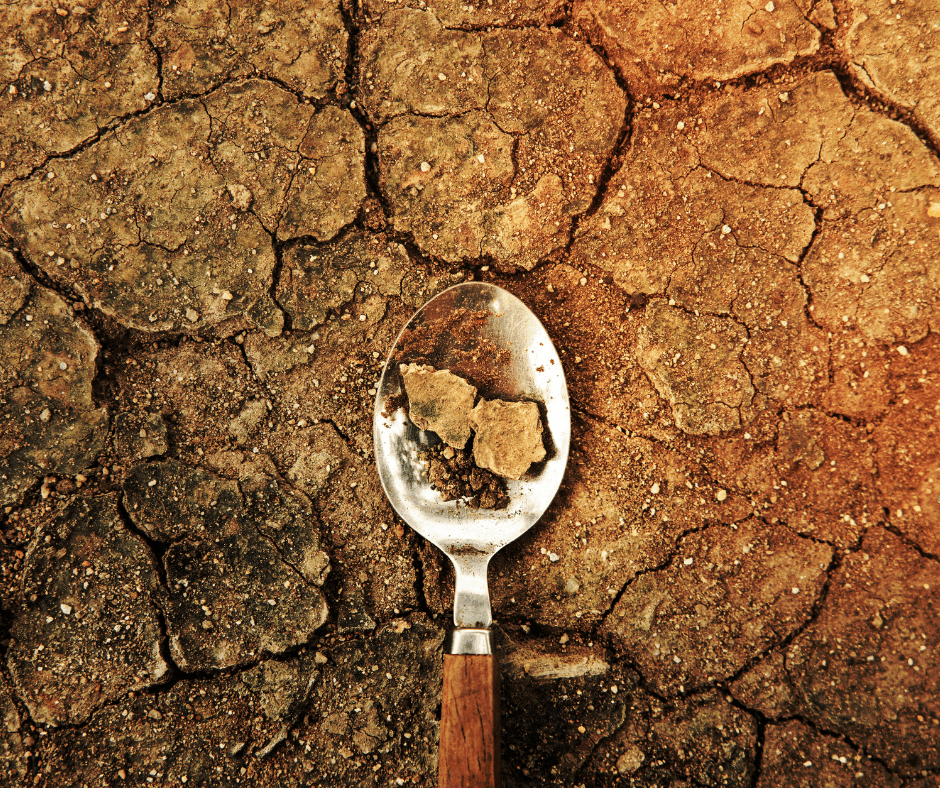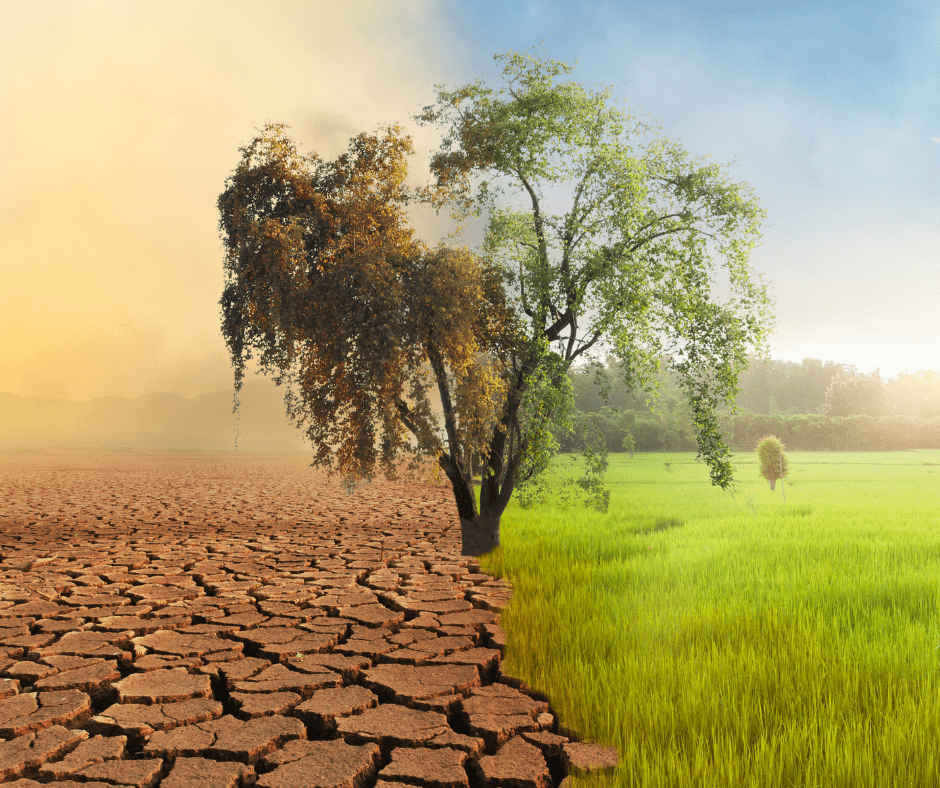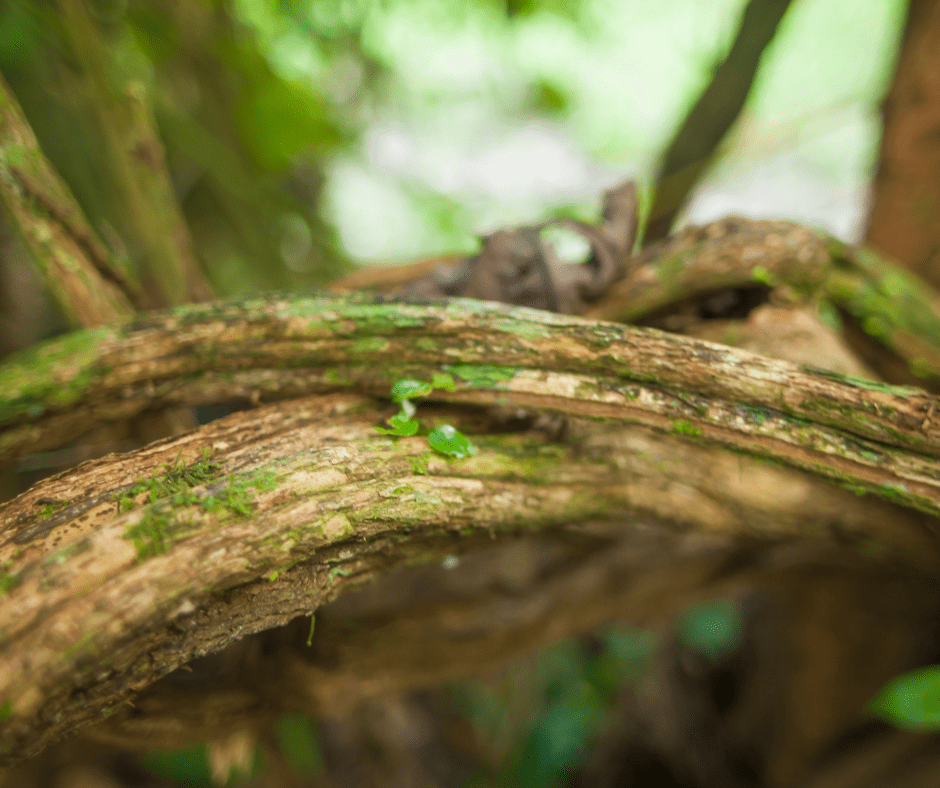Key Takeaway:
- Ayahuasca tourism is causing severe environmental damage, including deforestation, pollution, and soil erosion. We need to raise awareness of this issue and develop sustainable practices to minimize the impact on the environment.
- Sustainable practices, such as using eco-friendly materials and implementing waste management techniques, are key to reducing the negative impact of ayahuasca tourism on the environment. The development of eco-friendly policies and regulations can also help minimize the damage.
- Reforestation efforts can help to restore the biodiversity and ecosystem of the affected areas. Planting trees and other vegetation can not only prevent soil erosion but also promote a healthier environment for the local wildlife and surrounding communities.
Are you concerned about the environmental impact of your travel experiences? Ayahuasca tourism is becoming increasingly popular, yet the environmental effects of this activity are often overlooked. Discover here how this unique eco-tourism opportunity can be enjoyed with minimal detriment to our planet.

Understanding Ayahuasca Tourism and its Environmental Impact
Exploring off-the-beaten-path travel experiences can be an incredible and introspective way to learn about new cultures and ways of life. However, some forms of travel may have unintended environmental consequences. In this part of the article, I’d like to take a closer look at Ayahuasca tourism, a type of travel that has become increasingly popular in recent years. We’ll start by discussing what Ayahuasca tourism entails, and then dive into the environmental impact of this tourism on the regions where it takes place. The industry has been growing exponentially, but many environmental implications of this relatively new form of travel have yet to be examined.
The Definition of Ayahuasca Tourism: A Brief Introduction
Traveling to the Amazon rainforest to experience a traditional ayahuasca ceremony, known as Ayahuasca Tourism is gaining popularity around the world. It is an increasingly popular form of spiritual tourism that combines hallucinogenic drug consumption with a deep cultural learning experience. The phenomenon has been on the rise for over two decades now and has caught the attention of people from all backgrounds.
Ayahuasca is a powerful psychedelic brew, containing dimethyltryptamine (DMT) and harmine/harmaline alkaloids, used in ancestral rituals of indigenous communities in South America to get closer to nature and communicate with spirits. Ayahuasca tourism has come about as South American indigenous cultures have become more interested in sharing their traditions with outsiders.
One reason behind its success could be due to its ability to promise a life-altering experience, spiritual enrichment and can sometimes cure physical ailments or addictions. Ayahuasca boosts brain activity related to emotions and vision, causing alterations in consciousness that can last up to 10 hours. In some ways, it may be viewed as new-age healing techniques or modern therapy that seeks an escalated perspective on life. Book An Ayahuasca Retreat Ayahuasca Is A plant-based medicine that may have side effects. Make sure and do independent research before attending a retreat.
Pro Tip: Remember always to do your research before engaging in any such activities or experiences as they can cause negative outcomes if not approached properly.
As you delve deeper into your spiritual journey through Ayahuasca tourism, there comes a responsibility to understand its impact on local environments and wildlife. The practice has been known for land use changes and degradation issues with soil fertility caused by human defecation-caused ground pollution, among other things. Let’s discuss this issue in our next section – ‘Environmental Impact of Ayahuasca Tourism: An Overview of the Issues’.
Environmental Impact of Ayahuasca Tourism: An Overview of the Issues
Ayahuasca tourism has been gaining popularity in recent years, with people traveling to the Amazon rainforest in search of spiritual and healing experiences. However, this phenomenon has raised concerns about its environmental impact.
The Environmental Impact of Ayahuasca Tourism is a complex issue that can have far-reaching consequences. The tourism industry around ayahuasca operates differently from traditional tourism, and it’s difficult to measure its impact on the environment. Among the reasons for this are the lack of formal regulations, limited scientific studies, and the unpredictability of human behavior in these situations.
Ayahuasca is made from two plants found in the Amazon rainforest – Banisteriopsis caapi and Psychotria viridis. These plants are harvested from the wild and often overexploited by shamans who prepare the brew for tourists. This has led to deforestation, ecological damage, soil erosion, air pollution, and other environmental problems. Additionally, tourists themselves can also cause harm by littering or disturbing wildlife.
A report by Kichwa Hatari states that “Tourists frequently request larger amounts than they should consume or ask for multiple ceremonies which put significant pressure on both nature & local economies.” This highlights how ayahuasca tourism can lead to environmental degradation caused by overconsumption.
According to a study published in Journal of Ethnopharmacology titled “Environmental destruction by aurvedic drugs,” “Plants such as ayahuasca undergo a surge in demand upon their entry into Western markets.” Indeed demand for Ayahuasca has dramatically increased resulting in ecologystrength.com noting that the plant is at risk one day becoming extinct due to its high demand.
With these critical issues looming over us, understanding and examining the Environmental Impact of Ayahuasca Tourism must be approached properly. In my next section (Teasing), I’ll discuss ways we can lessen our Carbon footprints when engaging with ayahuasca tourism practices.”

Examining the Environmental Impact of Ayahuasca Tourism
As an avid Ayahuasca lover, it’s important to me to understand the environmental impact of the growing industry surrounding its tourism.
Ayahuasca tourism has transformed several areas in South America into bustling tourist destinations, and the impact of this growth on the environment cannot be overlooked. In this section, I will explore the environmental impact of Ayahuasca tourism from three angles. We’ll first take a look at the devastating effects of deforestation on biodiversity. Then we’ll examine the harmful effects of pollution brought on by Ayahuasca tourism on water and soil. Finally, we’ll explore how the rapid growth of the Ayahuasca industry is accelerating soil erosion.
Deforestation and its Devastating Effects on Biodiversity
The impact of humanity on the environment has been devastating. One such example is deforestation and its devastating effects on biodiversity. Deforestation refers to the process of clearing forests by removing trees or plants to make space for agriculture, industrialization or urbanization. This is an ongoing environmental issue in many parts of the world. The implications are far-reaching concerning climate change, loss of habitat, and loss of biodiversity.
The effects of deforestation have been severe in recent years. It leads to a decline in biodiversity as it affects the species’ habitats that are found exclusively in forests. It disrupts food chains, threatens many plant and animal species, and creates imbalances in ecosystems that can lead to long-term negative repercussions. For example, rainforests have exceptionally high levels of biodiversity because they support habitat for countless animal and plant species.
There are several reasons behind deforestation, including commercial logging for timber, converting forests into agricultural land and cattle ranches, mining activities, urbanization and road construction among others. As a result of these activities, about 30 million acres of forest disappear every year worldwide.
According to reports from the Intergovernmental Panel on Climate Change (IPCC), more than 5000 indigenous groups worldwide depend entirely on their existence with forests. If we do not act now to stop deforestation remains unchanged; most forests could disappear within fifty years or so.
The solution is complex, but possible; it will require global cooperation and policy measures. Some measures include:
- Reforestation efforts through afforestation & rehabilitation projects for degraded land areas among others;
- Conserving what’s left by declaring certain areas as protected regions where it’s illegal to cut down any trees or vegetation;
- Promoting sustainable forest management practices that ensure no overexploitation occurs from non-timber uses (such as honey harvesting).
But let us also focus on ourselves – individual actions count too! We can reduce our paper use & even promote e-bills, reduced meat consumption and products from sustainable sources. It’s a win-win situation for us and the environment – let’s take responsibility!
The aroma of fresh soil after the rains always brings me joy- this is why changes that our lifestyle choices bring in polluting it with plastics, chemicals & wastes are daunting. Read on to understand how Ayahuasca tourism affects water and soil quality.
Pollution: The Harmful Effect of Ayahuasca Tourism on Water and Soil
As Ayahuasca tourism gains popularity in South America, the impact on the environment is becoming increasingly clear. Pollution caused by this industry is a significant threat to water and soil quality in fragile ecosystems across the continent, posing potential harm not just to human health but also to the biodiversity of these areas.
The harmful effects of Ayahuasca on water and soil come from several factors, including the production process and the disposal of waste materials. The vine’s bark and leaves are typically boiled or soaked in water for extended periods, releasing potent compounds that have therapeutic properties but can have deleterious consequences when disposed of improperly. Due to inadequate regulation and insufficient legal safeguards, many facilities dump these toxic materials directly into nearby rivers and streams.
In addition to this direct pollution, Ayahuasca tourism has indirect effects as well. Because it attracts large numbers of visitors to previously pristine rural areas, it contributes to increased land use, road development, and deforestation. All of these factors can compound other environmental concerns such as soil erosion and habitat destruction.
Experts warn that the pollution problem caused by Ayahuasca tourism could reach alarming proportions if steps are not taken immediately to address the issue. Researchers at MIT have found evidence linking contaminants in river water downstream from Ayahuasca retreats to increased rates of disease transmission among locals. This finding underscores the severity of this environmental issue and highlights its potential impact across a broad range of ecological systems.
As I set out towards my next exploration on environmental impacts related with ayahuasca tourism in Amazon forests where multiple communities still practice these traditions with their ancestral wisdom handovered from generations over centuries – let’s take a closer look at how this industry accelerates soil erosion in some areas while mitigating it in others!
Soil Erosion: How Ayahuasca Tourism Accelerates Soil Loss
Soil erosion is a phenomenon that occurs when the top layer of soil is removed by natural or man-made means. Ayahuasca tourism, a popular trend in South America, has been found to be linked with soil erosion. How does this work?
Ayahuasca tourism involves the consumption of a traditional plant-based brew for therapeutic and psychedelic experiences. The process involves picking ayahuasca vines and leaves from the forest floor, thereby disturbing the natural ecosystem. As more tourists engage in this activity, the disturbance caused on forest floors leads to soil erosion.
The reasons behind accelerated soil loss in ayahuasca tourism are many. The collection of vines and leaves disturbs the root system of nearby trees, thus making them more vulnerable to wind and rain. The exposed forest floor also becomes susceptible to sediment runoff during wet weather conditions. Moreover, as tourists trample into ecologically fragile forests searching for ayahuasca plants, they end up contributing further towards soil erosion.
Ayahuasca tourism not only causes soil degradation but also contributes towards deforestation, loss of biodiversity and carbon sequestration in tropical forests. This eco-degradation may lead to permanent damage to these precious ecosystems.
Pro Tip: A better approach would be for tourists to explore options for sustainable agriculture while touring these regions instead of opting for ayahuasca tourism experiences that harm natural habitats.
If you thought ayahuasca tourism’s environmental impact was minimal, think again! Let’s explore how one can reduce their carbon footprint while being part of this movement.

Mitigating the Environmental Damage of Ayahuasca Tourism
As someone who’s passionate about sustainability and eco-friendly practices, it’s alarming to hear about the environmental damage of Ayahuasca tourism. However, it’s reassuring to learn that there are ways to mitigate this negative impact.
In this section, we’ll dive into sustainable practices that can help create a more eco-friendly Ayahuasca tourism industry. We’ll also explore how implementing eco-friendly policies can make a difference in minimizing environmental damage. Lastly, we’ll discuss the efforts made towards reforestation and how planting trees can help restore the forests and biodiversity that have been damaged due to Ayahuasca tourism.
Sustainable Practices: The Key to a More Eco-Friendly Ayahuasca Tourism Industry
Sustainable Practices: The Key to a More Eco-Friendly Ayahuasca Tourism Industry
Sustainable practices are essential for any tourism industry to minimize its impact on the environment. Ayahuasca tourism is no exception. By embracing and implementing sustainable practices, we can make the Ayahuasca tourism industry an eco-friendly one that benefits both local communities and the environment.
The key to achieving this is by adopting eco-friendly practices at every stage of the tourist experience, from transportation and accommodation to tours and activities. Some examples of sustainable practices include using low-impact transportation methods, reducing waste by promoting recycling and composting, and sourcing food from local producers.
Implementing these sustainable practices not only reduces environmental damage but also helps create a positive relationship between tourists and local communities. This connection has the potential to drive support for environmental conservation efforts.
Did you know that traditional Ayahuasca ceremonies involve the sustainable use of natural resources? In many cases, traditional healers will only harvest plants when necessary, ensuring their long-term survival in their natural habitat. By promoting such practices among tourists, we can further protect indigenous plant species that are used in traditional medicine.
Pro Tip: If you’re looking for an eco-friendly Ayahuasca retreat center, check if they have certification from recognized organizations like Rainforest Alliance or Green Globe. These certifications indicate that their facilities meet strict standards for sustainability.
Next up: Want to know how rules and regulations can help reduce negative impacts on the environment? Keep reading – Eco-Friendly Policies: How Rules and Regulations Can Help Reduce Negative Impacts.
Eco-Friendly Policies: How Rules and Regulations can Help Reduce the Negative Impacts
Eco-Friendly Policies: How Rules and Regulations can Help Reduce the Negative Impacts
We all are well-aware of the adverse effects human activities have caused to our environment. While it is not possible to undo the damage already caused, adopting eco-friendly policies can help mitigate further harm. Such policies work on principles based on sustainability, resource conservation, and preservation of natural habitats.
Eco-friendly policies aim towards creating a balance between human impact and nature’s capacity for self-renewal. It works by imposing regulations that limit human activities which cause environmental damage while promoting measures that restore ecosystem balance. Through stringent rules and regulations, eco-friendly policies pave the way for sustainable development, ensuring that neither consumers nor producers impose an unreasonable burden on the environment.
One such example is policymaking around Ayahuasca Tourism in South America. The increasing demand for Ayahuasca has led to environmental destruction threatening both flora and fauna. But with appropriate statutory guidelines, tourists can be restricted from exploiting natural resources or littering inside forests disrupting biodiversity.
Apart from preventing environmental damage, these policies also lead to better outcomes like improved public health or economic growth in eco-tourism areas. Ethical businesses operating within ecological limits are recognized worldwide as dependable contributors to community development while simultaneously respecting cultural and social values.
Inaction can result in severe consequences for our planet’s well-being. Therefore we need more environmentally conscious movements regulated by governments around us to look after the unique landscapes we all share as caretakers on this earth.
Don’t wait up – join forces with communities worldwide fighting against environmental degradation before it’s too late.
“You don’t want to miss out on being part of this movement that promises sustainable ecosystems”.
Reforestation Efforts: Planting Trees to Restore Forests and Biodiversity
Amidst the rising concern about the environmental damage caused by Ayahuasca tourism, reforestation efforts have come into play as a means to restore forests and promote biodiversity. It involves planting trees in areas where forests have been destroyed or degraded due to human activities like logging, mining, and agriculture.
Reforestation works by creating a suitable environment for new trees to grow and thrive, eventually restoring the ecosystem’s balance. The main reasons behind its effectiveness are that it helps reduce carbon dioxide levels, prevent soil erosion, and provide habitats for various wildlife species. Reforestation also has an economic impact by providing job opportunities for local communities involved in planting and maintaining trees.
Interestingly, reforestation is not just limited to planting new trees but also involves natural regeneration of degraded forest lands. Forest restoration initiatives aim to encourage natural succession by removing invasive species and promoting indigenous ones that help restore the area’s original ecological balance.
In fact, a study published in Science Advances revealed that forest restoration could help combat climate change cost-effectively while simultaneously offering numerous ecological and social benefits. The research estimated that restoring over 2 trillion acres of degraded land worldwide could sequester over 200 gigatons of carbon dioxide – equivalent to two-thirds of all human-generated emissions since the industrial revolution.
Seeing how reforestation brings enormous positive impacts on ecosystems’ health and local economies, it is a promising solution to address Ayahuasca tourism’s environmental impact. As I delved deeper into this topic, I realized how crucial ongoing forest restoration efforts are for our planet’s wellbeing – making me wonder how else we can reduce our eco-footprints as responsible global citizens.
Summary of the Environmental Impact of Ayahuasca Tourism: A Call to Action
The practice of Ayahuasca tourism has gained popularity in recent years, attracting tourists in search of spiritual experiences, personal growth, and healing. However, this type of tourism can have significant environmental impacts on the Amazon rainforest and surrounding communities. The following paragraphs will discuss the summary of the environmental impact of Ayahuasca tourism and a call to action for addressing its effects.
Ayahuasca is a plant-based medicinal brew that originated in indigenous cultures in the Amazon rainforest. It contains psychoactive compounds, which induce hallucinations and intense spiritual or transformative experiences. Ayahuasca tourism involves traveling to South America to participate in Ayahuasca ceremonies with shamans or healers who administer the brew. This practice has become popular among Western tourists seeking alternative forms of healing and spirituality.
While Ayahuasca tourism can have positive effects on individuals’ mental health and well-being, it often involves unsustainable practices that harm the environment and local communities. Deforestation, illegal logging, pollution of water sources due to waste disposal from ceremony sites, exploitation of indigenous knowledge as a commodity are some examples of these impacts.
To address these impacts, it’s crucial to take a transformative approach rather than just applying basic solutions such as reducing plastic usage or cleaning up littering around sacred sites. Thus calling for businesses facilitating Ayahuasca retreats or ceremonies to make sustainability part of their business model. Governments must regulate industry practices more strictly by holding operators accountable for any harm they cause through lawsuit or taxation similar to carbon tax schemes.
To avoid negative environmental impacts while still enjoying the benefits that Ayahuasca has on one’s mental health and personal development, tourists could choose places with eco-friendly principles where their travels would directly contribute to an organization in charge that works towards conservation actions such as replantation projects based on native plants promoting sustainable livelihoods through market access for forest restoration communities.
Therefore understanding how vital the synergy between spirituality and nature is necessary; we can reduce our impact by planning a more eco-friendly and sustainable retreat. We must ensure that this trend positively impacts not just the individual but entire communities as well, while jointly working towards protecting the rainforest and its inhabitants who have been living there for centuries.
Strategies to Mitigate the Environmental Impact of Ayahuasca Tourism: A Holistic Approach to Sustainability.
Ayahuasca tourism has grown rapidly over the years, with numerous people flocking to South America for its mind-altering experiences. However, this growth in tourism has also had environmental implications that threaten the sustainability of the practice. The article explores strategies to mitigate the environmental impact of Ayahuasca tourism using a holistic approach to sustainability.
The holistic approach involves focusing on multiple aspects of Ayahuasca tourism, including reducing waste, conserving water resources and promoting reforestation efforts. This approach takes into account the interconnectedness of social, cultural and environmental factors that contribute to Ayahuasca’s sustainable practice in South America.
The use of eco-lodges is one key strategy that helps offset the environmental impact of Ayahuasca tourism. These lodges employ eco-friendly practices such as using solar panels for energy and harvesting rainwater for consumption. Additionally, staying at these lodges promotes responsible tourism by prioritizing environmentally sustainable activities such as supporting conservation efforts or participating in traditional medicinal walks.
Another significant strategy is building strong community partnerships that support local conservation initiatives and biodiversity restoration projects. Such an approach strengthens community ties while promoting sustainable resource management.
To complement these strategies further, waste reduction measures such as composting, recycling and upcycling can be integrated into different stages of ayahuasca preparation and ceremonies. These measures not only reduce waste but also minimize pollution levels in ecologically sensitive areas within forested regions.
Pro Tip: When engaging in Ayahuasca ceremonies or visiting its natural habitat as a tourist or researcher, always remember not to take anything but memories from the environment; leave nothing behind but footprints on your journey towards contributing genuinely towards responsible sustainably developed practices.
Five Facts About The Environmental Impact of Ayahuasca Tourism:
- ✅ Ayahuasca tourism is becoming increasingly popular, attracting thousands of visitors to Amazonian regions each year. (Source: The Guardian)
- ✅ The influx of tourists has led to concerns about the environmental impact on the fragile ecosystem of the Amazon rainforest. (Source: BBC News)
- ✅ The harvesting and production of Ayahuasca requires specific plants that are under threat due to over-harvesting and deforestation. (Source: Healthy Debate)
- ✅ The rise in Ayahuasca tourism has led to increased air and water pollution, as well as habitat destruction and disruption of wildlife. (Source: GlobalVoices)
- ✅ There are efforts to promote sustainable and responsible Ayahuasca tourism, including supporting local communities and preserving the environment. (Source: National Geographic)
FAQs about The Environmental Impact Of Ayahuasca Tourism
What is the Environmental Impact of Ayahuasca Tourism?
The environmental impact of ayahuasca tourism refers to the effects of the growing number of visitors to the amazon rainforest who seek out shamans to consume the ayahuasca brew.
Is Ayahuasca Tourism Damaging the Amazon Rainforest?
Yes. The rapid rise in popularity of ayahuasca as a spiritual tool has led to a significant increase in demand for the plants used in the brew which has led to unsustainable levels of harvesting and deforestation in parts of the Amazon.
How Can We Mitigate the Environmental Impact of Ayahuasca Tourism?
One way to reduce the impact of ayahuasca tourism is to ensure that visitors are educated about the importance of preserving the rainforest and try to choose eco-friendly and sustainable retreat centers that prioritize the conservation of the Amazon.
What Are Some of the Main Environmental Concerns with Ayahuasca Tourism?
The main environmental concerns with ayahuasca tourism include habitat destruction, deforestation, soil erosion, pollution and the potential loss of biodiversity in the Amazon rainforest.
Can Ayahuasca Tourism Be Sustainable?
Ayahuasca tourism has the potential to be sustainable if it is done responsibly by tourists and retreat centers. This could involve using sustainable harvesting practices, supporting conservation efforts and reducing the carbon footprint of tourism activities.
What Can I Do to Help Reduce the Environmental Impact of Ayahuasca Tourism?
You can help reduce the environmental impact of ayahuasca tourism by being an eco-conscious traveler, choosing retreat centers that prioritize environmental conservation and supporting local efforts to protect the Amazon rainforest.
About Author

Kitty Ramirez is a passionate writer, explorer, and advocate for the preservation and understanding of indigenous cultures and traditional plant medicines. As the author of the blog, Kitty shares her knowledge and experiences from her many journeys across the globe, connecting her readers with the wisdom and healing practices of ancient cultures.
Born and raised in a multicultural family, Kitty developed a deep curiosity about the world and its diverse cultures at a young age. Her adventurous spirit led her to embark on a life of travel, exploring the far corners of the Earth in search of transformative experiences and a deeper understanding of human connection.
Throughout her travels, Kitty has had the opportunity to immerse herself in various indigenous communities, learning from their rich traditions and sacred healing practices. Her encounters with plant medicines, such as Ayahuasca, Sananga, and Rapé, have been particularly life-changing, inspiring her to share the power of these ancient remedies with a broader audience.
Legal Disclaimer: The information, including but not limited to, text, graphics, images and other material contained on this website are for informational purposes only. No material on this site is intended to be a substitute for professional medical advice, diagnosis treatment or recommendation. Ayahuasca is not an FDA-approved substance and side effects have been found. Make decisions based on your own level of comfort as an adult, not from anything you read on this website.






